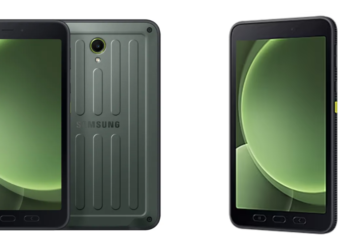Japan unveils world’s first 6G device
The first high-speed 6G prototype gadget in the world has been unveiled by a Japanese consortium. It is capable of sending data over 300 feet at a speed of 100 gigabits per second (Gbps). That outperforms the existing 5G technology by 20 times.
Japan has introduced the world's first 6G device. The Japanese consortium recently introduced the world's first high-speed 6G prototype device. It can transmit data at speeds of up to 100 gigabits per second (Gbps) to distances of more than 330 feet. Its speed is said to be 20… pic.twitter.com/gVhMGaaiGI
— POWER CORRIDORS (@power_corridors) May 13, 2024
Leading telecom businesses in Japan, including DOCOMO, NTT Corporation, NEC Corporation, and Fujitsu, collaborated to create the prototype gadget.
Also read: Apple’s AI Vision; Advanced Siri Enhancements, Researchers suggest improved ios18
The businesses stated that the prototype device can attain speeds of 100 Gbps indoors using the 100 gigahertz (GHz) band and outdoors using the 300 GHz band. The consortium reported the successful test findings on April 11.
The gadget successfully completed additional testing on April 11, which was hailed as a significant advancement in 6G technology development. The testing was done within a distance of 328 feet (100 meters) from the receiver.
Even if the speeds are very amazing, don’t have too high of hopes just yet. 6G is not a network that can be used for commerce; it was only tested in a single device. Furthermore, network technology has drawbacks of its own.
Also read: Diving into Innovation: Google Pixel 8a Launch; Battery, cutting edge features; Prices Leaked online
6G vs 5G: A Comparison
The greatest theoretical speed of 5G, the current gold standard for connection, is 10 Gbps. Real-world speeds, on the other hand, are usually substantially slower, averaging 200 megabits per second (Mbps) for US T-Mobile customers.
The higher frequency bands that 5G uses are one of the causes of these slow speeds. Higher frequencies have disadvantages even though they can result in faster speeds. They lessen the signal’s penetrating intensity and restrict how far it can go.
Furthermore, it’s claimed that 6G technology has greatly outperformed these speed bars. It is said to have made use of higher frequency bands, which allows for faster data transfer but has drawbacks such as a smaller penetration range that results in less network coverage.
Also read: Iphone 16 Series Prices Leaked; A18 Chipset, AI Integration & More; All the Details Here
6G technology: Challenges and future outlook
In addition to its anticipated speed, 6G technology has encountered difficulties with frequency constraints and environmental elements like rain and barriers that could compromise its functionality. It is imperative to acknowledge that 6G technology has advanced, since it has the ability to transform communication through features like enhanced virtual experiences and real-time holographic communication.
Although 6G technology is still in its infancy, this prototype device is reportedly a critical step toward its eventual commercialization.
It will be used by researchers worldwide to learn new things and develop advancements that will open the door to quicker and more effective internet connectivity in the future.













